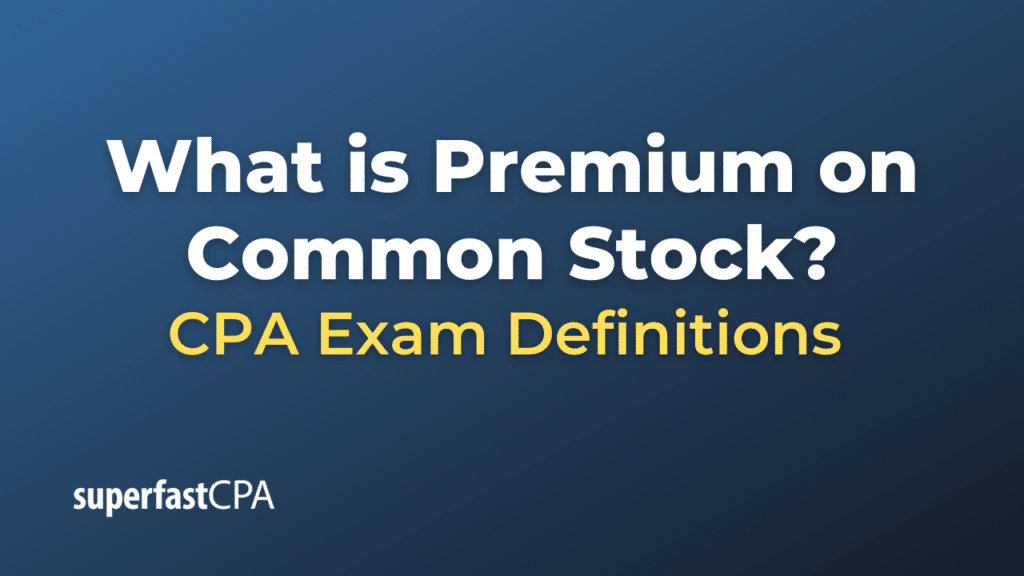Premium on Common Stock
Premium on Common Stock, also known as Paid-in Capital in Excess of Par Value or Additional Paid-in Capital, is a balance sheet item that comes into play when a corporation issues common stock for a price that is greater than its par value.
Par value is the nominal or face value of a stock as stated in the company’s charter, and it is often set very low, such as $0.01 per share. When a company sells shares for more than this amount, the difference is recorded as Premium on Common Stock or Additional Paid-in Capital in the stockholders’ equity section of the balance sheet.
For example, if a company issues 1,000 shares of common stock with a par value of $1 per share but sells these shares for $10 each, the Premium on Common Stock would be $9,000. This is calculated as the number of shares issued (1,000) multiplied by the difference between the selling price ($10) and the par value ($1), i.e., 1,000 * ($10 – $1) = $9,000.
This account represents capital that the corporation has received from investors over and above the par or stated value of the shares, which is why it is often referred to as Additional Paid-in Capital. It is part of the total paid-in capital, which also includes common stock at par value and preferred stock.
Example of Premium on Common Stock
Suppose that a company named BrightTech Inc. issues 1,000 shares of common stock. The par value of each share is set at $1, but given the high demand for the shares due to BrightTech’s promising prospects, each share is sold for $50.
Here’s how the accounting for this stock issuance would look:
The company would receive a total of $50,000 from this issuance (1,000 shares * $50 per share).
Of this amount, $1,000 would be recorded as common stock (1,000 shares * $1 par value), and the remaining $49,000 would be recorded as Premium on Common Stock (1,000 shares * ($50 selling price – $1 par value)).
Here’s the corresponding journal entry for this transaction:
Debit: Cash $50,000
Credit: Common Stock $1,000
Credit: Premium on Common Stock $49,000
In this scenario, BrightTech’s balance sheet would now show $1,000 in Common Stock and $49,000 in Premium on Common Stock (or Additional Paid-in Capital) under the stockholders’ equity section. Together, these two accounts represent the total paid-in capital from the stock issuance.













